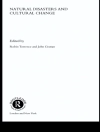Our understanding of the construction processes involved with British Neolithic architecture needs further investigation. The people were preliterate and there is no archaeological evidence of written or pictorial information regarding construction. So how could they build complex monuments like Stonehenge without a plan? This book argues that the Neolithic builders used rudimentary techniques to plan before building their monuments (circa 4000 – 2500 BC) – essentially, using ropes to set out the physical design of any structure they intended to build, whilst finger reckoning numeracy dictated how their measured ropes were folded to position the monument’s features. Finally, they used the sun’s shadow at midday to achieve orientation. To support this premise, the book offers both the results of the author’s "rope experiments" and instructions for repeating them. Importantly, this form of experimental archaeology delivers a unique approach for understanding the nature of complex Neolithic architecture. Essentially, the book explains the mental processes involved between design and construction.
John Hill
Experimental Archaeology and Neolithic Architecture [PDF ebook]
Between Design and Construction
Experimental Archaeology and Neolithic Architecture [PDF ebook]
Between Design and Construction
Kup ten ebook, a 1 kolejny otrzymasz GRATIS!
Format PDF ● Strony 215 ● ISBN 9781036400224 ● Wydawca Cambridge Scholars Publishing ● Opublikowany 2024 ● Do pobrania 3 czasy ● Waluta EUR ● ID 9451759 ● Ochrona przed kopiowaniem Adobe DRM
Wymaga czytnika ebooków obsługującego DRM












